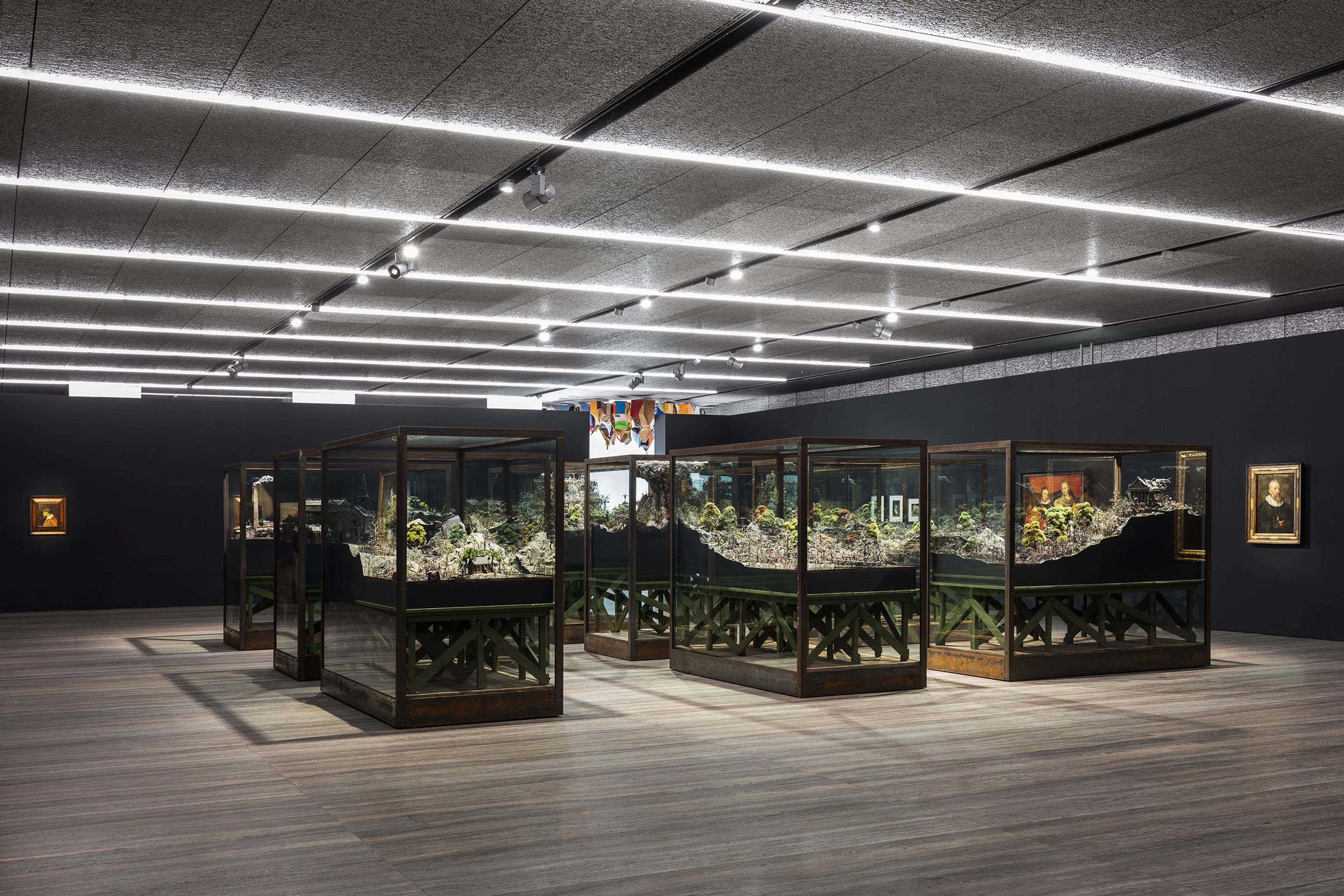Fondazione Prada, Milan
2018–2019
October 18, 2018—February 25, 2019
Fondazione Prada presented Sanguine: Luc Tuymans on Baroque, the artist’s major curatorial project that spans centuries in search of the formal and conceptual boundaries of the baroque in art history. Tuymans places significant pieces by Caravaggio, Anthony van Dyck, Peter Paul Rubens, Francisco de Zurbarán, and other Baroque masters in dialogue with contemporary works by artists including Michaël Borremans, Berlinde De Bruyckere, Marlene Dumas, On Kawara, Bruce Nauman, and Zhang Enli. This exhibition expands on Sanguine/Bloedroodat the Museum of Contemporary Art (M HKA) in Antwerp earlier in 2018 and is the latest of a number of significant museum shows organized by Tuymans.
Taking as its starting point Walter Benjamin’s description of the Baroque as marking the beginning of modernity, Sanguine viewed this period as an important reference point for contemporary artists; avoiding chronology, the show juxtaposed examples from different moments in an effort to reveal how recent artworks not only extend Baroque attitudes and approaches into the present day, but also help to redefine them in areas such as figurative composition. “Sanguine,” evoking both the color of blood and an expressive temperament, suggests multiple interpretations of the works on view. As Tuymans wrote in his curatorial statement, “The term ‘baroque’ continues to evoke some of its original negative connotations—exaggeration and indulgence—but simultaneously suggests something exciting, something elusive. . . . The aim is to make a feedback to our present time.”
“The Baroque is as much a temperament as a style,” Jason Farago writes in his New York Times review of the show in Antwerp; “It’s theatrical, and obsessed with death. . . . It’s this visceral character that seems to interest Mr. Tuymans most in Baroque art, and much of the most compelling contemporary work in ‘Sanguine/Bloedrood’ echoes the 17th-century tradition in its excess and intensity, rather than in its appearance. . . . Perhaps this is the real point . . . beyond the formal echoes of light and shadow across centuries: that the extremity of Antwerp’s old style serves all too naturally for art that aims to depict our present age.”
